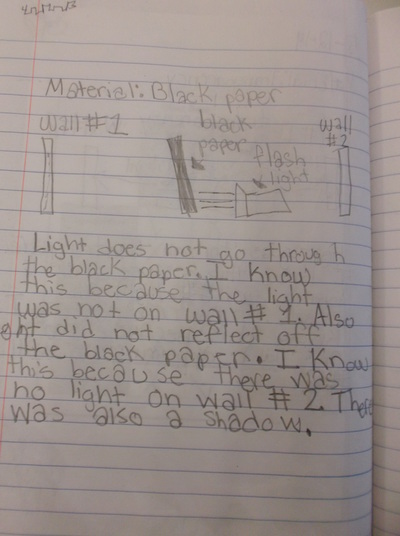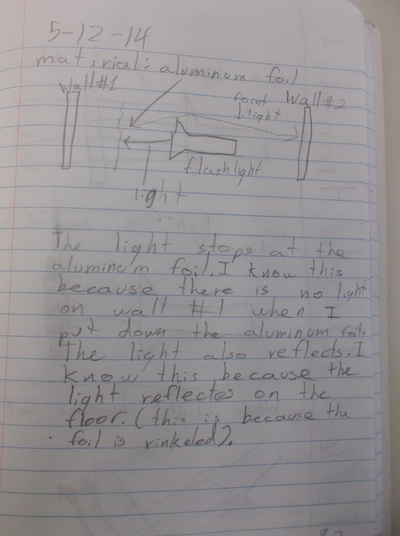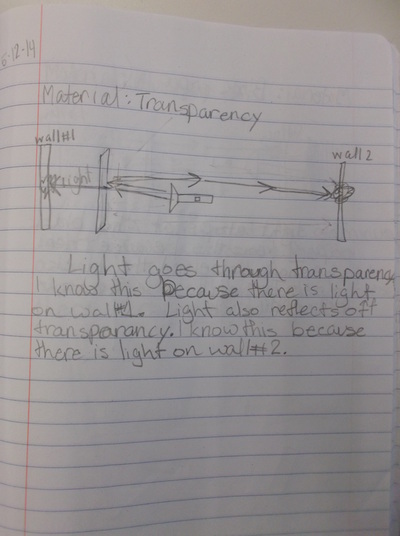Now that third graders have seen how different materials interact with light, they are making claims based on the evidence they gather. Based on what they see on both walls, they are expanding their scientific vocabulary to provide evidence that support their claims.
Light can...
1. Be reflected off a surface! This means light bounces off it. Technically, anything we see has light reflecting off of it into our eyes. This enables us to see.
2. Be absorbed into a material! This means that light is soaked up (or blocked from going through). A shadow is cast on the opposite side of a material because light cannot pass through it.
3. Be transmitted through a material. This means that light goes through a material and is not altered in any way. It continues to travel in a straight line.
Check out the third graders claims and evidence from their walls experiments! Way to go third grade!
Light can...
1. Be reflected off a surface! This means light bounces off it. Technically, anything we see has light reflecting off of it into our eyes. This enables us to see.
2. Be absorbed into a material! This means that light is soaked up (or blocked from going through). A shadow is cast on the opposite side of a material because light cannot pass through it.
3. Be transmitted through a material. This means that light goes through a material and is not altered in any way. It continues to travel in a straight line.
Check out the third graders claims and evidence from their walls experiments! Way to go third grade!



 RSS Feed
RSS Feed